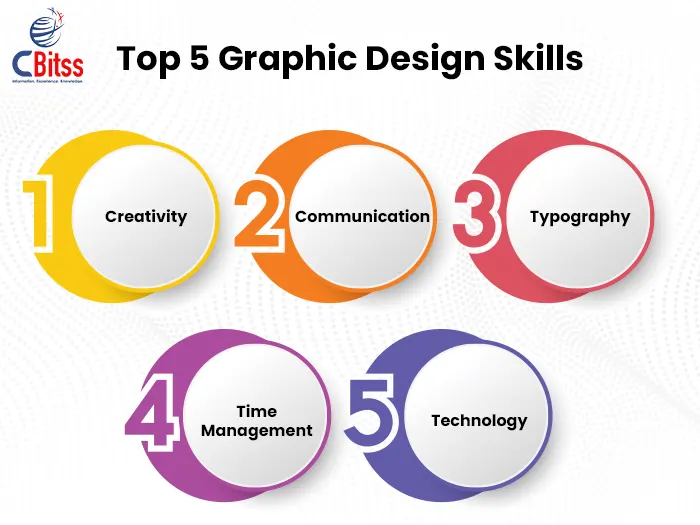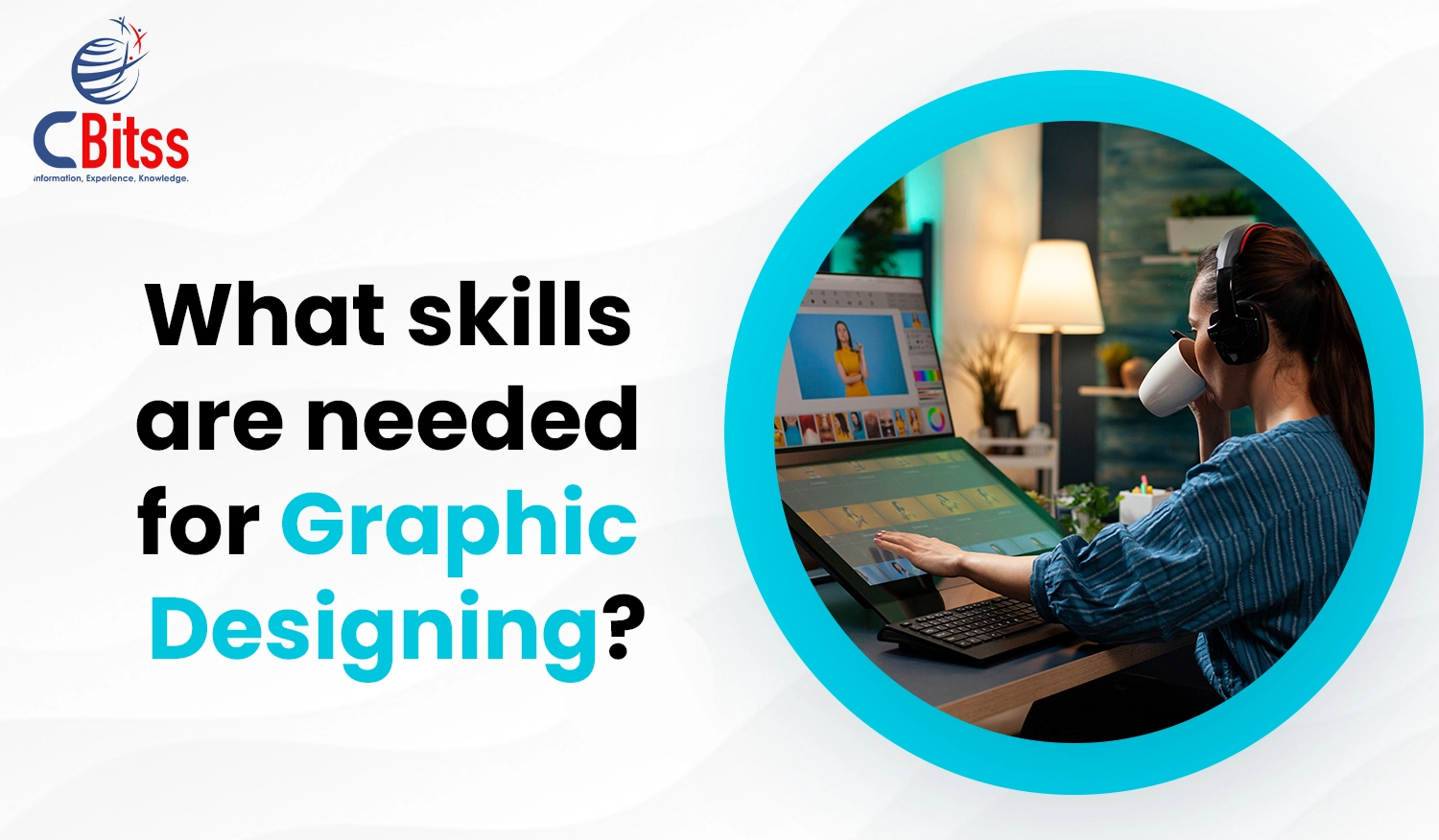Introduction
So, you are leaning towards graphic design training. There can be two possible paths that drive you to study graphic design. These include attractive Instagram posts and a natural affinity for creating beautiful visual elements.
Your desired reason to enter the field makes graphic design an excellent choice. It offers creativity combined with high demand and continuous evolution. Now, if you are thinking about what skills are needed for graphic designing, no need to worry. We present you with all the information you need. Let’s get started!
1. Creativity: The Heart and Soul of Graphic Design
The design relies on pure creativity because creativity forms its core essence. A successful graphic designer must develop radical thinking capabilities to generate modern concepts. Despite popular belief, creativity exceeds abstract artistic abilities. It’s about solving problems visually.
How to Boost Your Creativity:
- Try testing numerous design approaches alongside various artistic procedures.
- View inspirational design content through following internet platforms such as design blogs, Pinterest boards, and Instagram accounts.
- Daily practice requires you to sketch drawings and doodle artwork or work digitally on your projects.
- Creative designs play a major role in developing winning PPC landing pages that convert visitors into customers.
Today’s top graphic design institutes Chandigarh encourage students to explore their creative side through live projects and workshops.
Fun Fact: Apple and Nike joined many world-famous brands that created their logos with basic innovative visuals.
2. Technical Skills: Tools of the Trade
Most important of all is creativity yet you must also master the applications required to turn ideas into reality. The essential toolkit for graphic designers includes these specific software and tools.
With Adobe Photoshops transforming pictures into visually appealing patterns, designers need the following software and tools:
- Adobe Illustrator: For vector graphics like logos and illustrations.
- Canva: A beginner-friendly tool for quick designs.
- Figma functions as a tool to create both User Interface along User Experience designs while building prototypes.
- CorelDraw and InDesign are also part of the latest software taught in graphic design to ensure designers can work across publishing and branding platforms.
Your learning journey should begin with one tool either Canva or Photoshop before advancing to multiple tools. Mastering graphic design tools improves your chances for high-quality jobs in graphic design.
3. Typography: The Art of Making Text Beautiful
Typography goes beyond selecting fonts since it represents an art form. Exploring various text sizes and font combinations as well as space between letters helps to create an attractive overall design appearance. Your design appearance will display professionalism with good typography but poor typography choices will destroy it.
Quick Typography Tips:
- Stick to 2-3 fonts per design.
- Different text fonts should be applied to headings while the body text material should receive distinct fonts.
- Proper attention must be given to text alignment and spacing.
Example: It’s similar to movie posters which attract scrutiny through bold decisive text.
4. Color Theory: The Science of Colors
Colors inside your design stimulate emotional responses and establish design characteristics. Your ability to create harmonious designs with powerful impacts improves through knowledge of color theory principles.
Basic Color Theory Concepts:
- Primary Colors: Red, blue, and yellow.
- Complementary Colors: Colors opposite each other on the color wheel (e.g., blue and orange).
- Monochromatic Colors: Different shades of the same color.
Pro Tip: To create a soothing atmosphere, pick blue and green hues. Select red and orange tones when you need to boost energy levels in a design.
5. Communication Skills: Telling Stories Through Design
The art of graphic design focuses on more than visual appeal because it requires delivering clear messages to the audience. The visual content you create, either through logos, posters, or social media graphics, needs to narrate a distinct message.
How to Improve Communication Through Design:
- Understand the target audience.
- Simplicity should guide the design approach together with a minimal design approach.
- Graphics must use elements that match the main subject.
Example: A charity poster emphasizes its message through a combination of emotional imagery together with limited text.
6. Attention to Detail: The Devil is in the Details
Design failure occurs because one wrong design element or typographical mistake appears in the creation. Great design expertise emerges from careful attention to every detail in design work.
Tips for Perfecting Your Designs:
- Always proofread your text.
- Check alignment, spacing, and consistency.
- Zoom at close ranges to watch for small details.
7. Time Management: Meeting Deadlines Like a Pro
Graphic designers face constant workload pressure because they maintain several projects under urgent delivery schedules. Effectively managing your time guarantees that you will provide high-quality deliverables according to deadlines.
Time Management Hacks:
- Break projects into smaller tasks.
- Graphic designers should use the tools Trello or Asana to maintain their organization.
- You should establish achievable deadlines along with a commitment to maintain them.
Many graphic design institutes now incorporate time-tracking and productivity software training into their curriculum, helping students prepare for real-world pressure.
8. Portfolio Development: Your Creative Resume
A graphic design portfolio is the ultimate proof of your capabilities. It helps potential employers and clients visualize your range of work.
Tips for Building a Strong Portfolio:
- Include 6–10 of your best projects.
- Display a variety of formats like social media posts, logos, brochures, and websites.
- Add case studies describing the design challenge and your solution.
Fact: Most top graphic desin institutes make portfolio-building a compulsory part of their training to ensure students are job-ready.
9. Business & Marketing Awareness: Design That Sells
Knowing the ppc in business essential context is a plus for designers who want to work in digital marketing roles. Understanding the SEO and PPC difference helps in creating landing pages, banners, and ads that convert.
New Industry Demand: Graphic designers with a grasp of digital marketing basics like CTR, PPC, and SEO perform better in client-based and e-commerce roles.

Why Choose CBitss for the Graphic Designing course in Chandigarh?
People serious about launching a graphic design course and placement should choose CBitss Technologies in Chandigarh because it serves as their initial platform. Here’s why:
- Comprehensive Curriculum: Learn everything from design basics to advanced tools like Photoshop, Illustrator, and CorelDraw.
- The education at CBitss involves practical training in real-life projects to establish an extraordinary portfolio.
- Expert Trainers: Get guidance from industry professionals with years of experience.
- Affordable Fees: High-quality education at a reasonable cost.
- The job placement service at CBitss connects its students to multiple recruiting organizations so they can secure ideal career positions.
- The exceptional aspect of CBitss is that you gain permanent access to all educational materials to refresh your knowledge anytime you need.
Your Graphic Design Educational Pathway Begins From This Very Point
The graphic design students of Chandigarh should consider CBitss Technologies as their primary source for learning this field.
So, what are you waiting for? Become creative with your laptop and launch your future development through design projects today.
Taking courses at CBitss’ Graphic Design Course for beginners will launch your journey toward obtaining a fulfilling design career. Your creative journey begins now!



